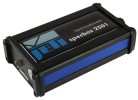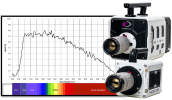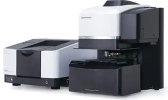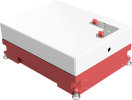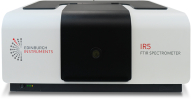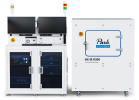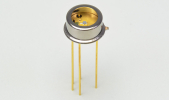
Shimadzu announces the release of the AIMsight infrared microscope. AIMsight builds on the high sensitivity of Shimadzu’s well-known AIM-9000 to offer an improved operational experience through greater automation. AIMsight is intended for industrial applications in various sectors, including drug manufacturing, materials science, electrical devices and electronics, machinery, transportation equipment, and the environment.
An infrared microscope such as AIMsight is used by connecting it to a Fourier-transform infrared (FTIR) spectrophotometer to measure micro-regions using the reflection and transmission of infrared light that cannot be measured by FTIR1 units alone. This mainly applies to analysing and identifying micro-contaminants, such as those adhering to pharmaceutical pills, dirt on electronic circuit boards and microplastics.
Meeting new demands with new instruments
In 2016, Shimadzu introduced the AIM-9000, an infrared microscope equipped with excellent sensitivity and an automatic contaminant analysis function. Since then, the demand for measurements using infrared microscopes has proliferated. At the same time, the lack of analysts with experience in such measures has also grown partly due to this. The result is that there is now a very strong demand for highly sensitive instruments capable of quick, easy and trouble-free measurements of smaller targets. That’s where AIMsight2 comes in.
Automatic effects
AIMsight meets that demand. It quickly – and, importantly, automatically – measures micro-targets by irradiating them with infrared rays and then investigating the reflectance and transmittance. It features easy determination of the measurement range via a wide-field camera and by automatic identification of measurement targets, automatic setting of measurement positions and automatic analysis via a contaminant analysis program.
Keeping you on the environmental cutting edge
Environmental concerns have also increased since 2016. The AIMsight infrared microscope uses the new T2SL (type-II superlattice) detector to address those concerns. The T2SL does not use mercury or cadmium, which is restricted under the European Restriction of Hazardous Substances (RoHS) Directive for electronic and electrical equipment. The T2SL detector, a so-called quantum infrared detector, has gained favourable attention as a high-sensitivity, next-generation infrared sensor.
Not only is AIMsight a more environmentally friendly instrument to own and use, but it is also an invaluable tool in trace-contaminant analysis and quality control. Its role in researching microplastics, the tiny plastic particles that negatively impact the environment. This interests various fields, from chemistry and electrical and electronic devices to machinery and transportation equipment.


